- Home
- Clive Cussler
Sea of Greed Page 6
Sea of Greed Read online
Page 6
What had once been gray-painted steel was now covered in barnacles and flakes of rust.
“Pipe exposed,” Kurt said. He retracted the first robotic arm and extended a second. Gripped in the claw at the end of this arm was a large block of C-4 connected to a detonator and a circular band that would allow them to clip the explosives to the pipe. The band was open at one end and would slip over the pipe with a slight shove, clipping on like a bracelet.
“Don’t bump it too hard,” Joe said. “The pressure in that line is nearly ten thousand psi and there’s no telling if the other explosions damaged it.”
“I’ll be gentle,” Kurt insisted.
With a deft hand, Kurt forced the clip onto the pipe and it locked into place. “Easy peasy,” he said. “Now back us off.”
Joe engaged the propellers once more and the sub pulled away from the pipe. As they moved back, a thin wire spooled out. A hundred feet out, Joe slowed to a halt and held station.
“Setting the countdown for fifteen minutes,” Kurt said. “That ought to give us time to get back on the Raleigh, crack open a beer and settle in to watch the fireworks.”
With a nod from Joe, Kurt started the timer. A digital readout on the control panel flashed 15:00 and then began clicking down.
With the timer operating, Kurt disconnected the control wire and Joe spun the sub around to take them out.
* * *
• • •
UP IN the OSLO compartment, Captain Brooks watched on the remote screen as the timer started clicking down. Cox stood over the fish tank, watching the tiny electronic version of the submersible navigate back along the orange pipeline trail. He marveled at the detail. “I feel like Zeus, looking down on the world from Mount Olympus.”
“More like Poseidon,” the captain replied. “But I know what you’re saying. I’ve almost gotten used to it now, but I remember feeling the same way the first time we used it on a salvage operation.”
Circling around the display, Cox studied the shattered arrangement of pipes, the bits of wreckage that had come off the Alpha Star that now littered the seafloor, and the miniature version of the slow-moving sub that Kurt and Joe were piloting. To his surprise, it wasn’t the only thing moving in the tank. “What’s this?”
Brooks looked his way. “What’s what?”
“There’s another guppy in your tank.”
Captain Brooks crouched down beside Cox, took a long, hard look and then shook his head. Reaching for the control panel, he tapped the key to zoom in. He tapped it once, twice and then a third time.
After the third increase in magnification, he could clearly make out a disk-shaped object, moving to the south. It flickered, reappeared and then vanished again.
“Is that a glitch?” Cox asked.
“I don’t think so,” the captain said grimly. “The tank can only show us what the sonar is picking up. The fires, venting gas and wreckage are blocking the signal in places, causing it to cut out. But there was something there all right.”
Brooks picked up the phone and contacted the bridge. “Helm, give us five knots and pull us around to the northeast. Have the sonar team max out the pulse, if they haven’t already.”
Brooks continued scanning the display as the ship began to move. For several moments, there was nothing to see. And then the red disk reappeared.
“Looks like a Frisbee,” Cox said. “Or a flying saucer.”
“Which seems appropriate,” Brooks said, “since it’s completely unidentifiable.”
Brooks pressed the intercom button again, this time reaching out to the sonar operations room. “Sonar, this is the captain. I’m down in OSLO, we’re seeing a contact bearing zero-four-five, depth eight hundred and fifty feet, heading directly for the danger zone. Any chance this is an artifact or a biological reading?”
“Negative,” the sonar operator said. “Speed and sound profile indicate electrically powered water jets.”
“What does that mean?” Cox asked.
“It means Kurt and Joe have company.”
10
NUMA SUBMERSIBLE, AT A DEPTH OF EIGHT HUNDRED FEET
“WHAT DO YOU mean another contact?”
Kurt was responding to the news from Captain Brooks. He wasn’t sure that he’d heard correctly.
“Just what I said,” the captain replied. “Another submersible, heading across what’s left of the collection grid down there. We lost it as it went behind the largest of the fires, but it was definitely there.”
“Are you sure it’s not just drifting wreckage?” Joe asked.
“Not unless the wreckage is powered by an impeller.”
“Any idea who it is?”
“Not a clue.”
“If this was sabotage,” Joe said, “whoever did it would need a vessel to plant the explosives. And if they realized the other two platforms are salvageable, they might be coming back to finish the job.”
“Our thoughts exactly,” Brooks said.
Kurt pressed the talk switch once more. “We’ll go have a look. No point trying to save the other rigs if we’re going to let someone come in and blow them up.”
“We’ve already plotted an intercept course,” Brooks said. “Head zero-seven-seven, assuming they haven’t changed course or depth, which should bring you right in behind them and fifty feet above.”
Joe made the adjustments to the controls and the sub turned and picked up speed. They crossed the tangled arrangement of pipes at an angle, navigating away from the main fire. “You know,” he said, “we could just leave them down here and let them get a monster headache when our explosives go off.”
“The thought crossed my mind,” Kurt said. “But there’s a chance it’s not a hostile vessel. A lot of wealthy people have their own submarines these days. And I wouldn’t put it past one of the news networks, or an independent reporter, to charter a submersible and send it out to get the first video of the disaster. The pictures would be worth millions.”
“We should be so lucky,” Joe said. “But on the chance it’s not a wayward reporter, what do you propose we do about them? Unless you’ve forgotten, we’re not armed.”
“When has that ever been a problem?” Kurt said.
“At least eighty percent of the time.”
Kurt had to smile. “You’re not wrong,” he said. “Let’s find out what we’re dealing with first. Then we’ll come up with something.”
Joe kept them moving at the submarine’s maximum speed. He diverted slightly to avoid one of the smaller fires and in doing so came upon something new. Something he or Kurt couldn’t have possibly expected to find.
Down on the seafloor, lined up side by side as if they were in a parking lot, sat four full-sized tanker trucks without the tractors attached. The tires had been stripped and the steel wheel hubs were buried in the sediment up to the axles.
An intricate series of pipes connected the cylindrical bodies of the tankers to a thick pipe that ran horizontally and then downward into the seabed.
“What in the world . . .” Joe whispered.
“Raleigh, are you seeing this?” Kurt said.
“We’re looking at it.”
“What kind of setup are you guys running here?” Kurt asked.
The question was for Cox. “I have no earthly idea what those trucks are doing there. They’re not ours, that’s for sure.”
“They’re connected to the pipeline,” Joe said. “Could they be responsible for the flammable gas we’ve been dealing with?”
“Even four tanker trucks couldn’t hold enough gas for what we’ve seen,” Kurt replied.
“Those aren’t the collection pipes,” Cox said. “Those are the injection lines. We use them to pump pressurized water into the rock layers beneath the oil field. That’s how we force the oil to the surface in these old wells.”
Jo
e circled the arrangement. A little farther off, he spotted four more tankers connected to another line in the distance.
Before he could move to investigate, Captain Brooks spoke. “Target reacquired,” he said.
Kurt and Joe glanced around. “We can’t see anything.”
“It’s a quarter mile to the east. It’s heading right for you.”
Joe slowed the sub and turned to the east, but still they saw nothing.
“Three hundred yards,” the captain warned. “Two hundred . . .”
Normally, in the depths of the ocean there was zero light to see by. Even powerful lights would be absorbed in a few hundred feet of water. But with the columns of fire burning all around them, the seafloor was a patchwork of light and shadows.
Through that kaleidoscope, Kurt spotted an object headed toward them. It was thin and flat. And then it seemed to expand as it changed depth, raced above them and dropped three items that looked suspiciously like the charge he and Joe had just placed.
“Get us out of here,” Kurt said.
Joe shoved the throttle to full and the submersible began to move away from the parked tankers. It seemed to move very slowly.
“Is this all we’ve got?” Kurt asked.
“This thing wasn’t built for speed,” Joe replied.
The objects dropped slowly behind them, landing in the nest of submerged tanker trucks.
Kurt knew it wouldn’t be long. “Take us up.”
Joe vented the ballast tanks, raised the bow and held on tight as three flashes went off in rapid succession.
The shock waves hit simultaneously, slamming the submersible and sending it tumbling.
Fortunately, what the NUMA submersible lacked in speed it made up for in strength. Designed to operate at depths below ten thousand feet, the hull was incredibly strong and stiff. It neither bent nor flexed, absorbing the punishment and righting itself as the shock wave passed.
Kurt and Joe were shaken around inside but remained in their seats, held tight by shoulder harnesses.
With Joe righting the submersible, Kurt looked around for their attacker.
“I can’t see him,” Kurt said, grabbing his headset off the floor and putting it back on. “Raleigh, do you have the target?”
“Negative,” the captain said. “The explosion scrambled our sonar picture. It’s going to be a moment before it settles down.”
“He blew up one set of those tankers,” Joe replied. “I’ll bet you a month’s pay he’s going for the other set before he departs.”
Kurt nodded. “Let’s get him before he gets there. Kill the lights and bring us around. He gave us a shot, now it’s our turn to surprise him.”
Joe switched off the external lights and brought them in a half circle toward the second group of submerged trucks.
Kurt pointed. “I see him. He’s coming in on the port side. Looks like he’s setting up for another bombing run. If you can get above him, I can grab on with the robotic arms.”
“I think I can arrange that,” Joe said.
He took the sub upward, turned onto a new course and then began to descend in a curving, intercepting line, dropping toward the other sub like a hawk moving in for the kill.
The flat, disk-shaped submersible was slowing as it approached the tankers. Its lights came on, illuminating the group of trucks.
Joe closed the gap, dropping faster. “I’m willing to pounce on him, but if little green men come out, all bets are off.”
Kurt got the robot arm ready to grab anything he could and kept his eyes locked onto the target beneath them. “Hit him hard.”
Joe shoved the stick forward and the heavier NUMA sub nosed over, delivering a shuddering blow to the alien-looking craft. Extending the robot arm, Kurt grabbed at a set of conduits on the outer shell of the other sub, clamping down on the metal tubes and pulling back.
Instead of speeding up or slowing down, the other sub spun like it was on a turntable and extended an arm of its own toward them.
Kurt ripped the conduits from the back of the other vessel, hoping to deny it power. But the vessel continued to operate. It pulled free of Kurt’s grasp and moved upward. As it passed the front view port, its own claw opened, releasing a block of explosives, which hit and stuck to the bow of the NUMA craft.
Joe threw the sub into reverse and pulled away, but the explosives had already attached to the hull. “Magnetic.”
The other vessel spun once again, powered up its water jets and sped off, blasting the silt as it went and creating a swirling cloud that obscured its departure.
“Neat trick,” Kurt said.
“I’d follow him,” Joe said. “But we’ve got bigger problems to deal with.”
Kurt pulled the robotic arm back, noticed that the conduit he’d grabbed and some attached components from the other submarine were now dangling from its grasp. He locked the grip.
“Might want to look at those later,” he said, switching to the second arm.
“Assuming we’re not obliterated,” Joe said. “Can you get that bomb off our hull?”
Switching to the other robot arm, Kurt stretched it out and grabbed at the explosives. But because of where they’d attached themselves, there was no way to grasp them. The best he could do was knock them with the side of the arm.
“He’s heading back for the other trucks,” Joe said. “If this bomb is linked to go off simultaneously with those . . .”
Kurt knew they didn’t have much time. He swung the robotic arm sideways, slamming it into the charge. A direct hit. The charge slid several inches, but the magnetic base simply reattached itself to the hull and in a position now completely out of reach.
“This is another fine mess you’ve gotten us into,” Joe said.
“True,” Kurt said. “Assuming we survive, I’ll take the blame. Any ideas? Scraping it off doesn’t seem to be working.”
“Heat,” Joe blurted out. “Heat will demagnetize the material. We’ve got to take the sub into the fire.”
“Do it.”
Joe had already turned toward the nearest fire and was heading right for it. Approaching the swirling column was tricky because of the turbulence created by the burning gas, but he managed to ease the nose of the sub into the fire zone and fought to keep it there.
The temperature rose quickly.
“No time for a slow burn,” Kurt urged. “Melt that thing.”
Joe pushed the sub farther in. It became caught in the rising vortex of flame, gas and water. The temperature spiked, the magnet weakened and the explosives slid off the hull.
“Get us out of here,” Kurt said.
Joe turned the sub and guided them free of the fire, but they’d only gone a short distance when twin explosions rocked the depths where the other tanker trucks had been.
Kurt braced himself for the inevitable, but the charge that had been attached to their hull—wherever it had fallen—never exploded.
Kurt looked over at Joe. “Fire must have melted the detonator.”
“Obviously,” Joe said. “I knew that would happen. I wondered what you were so worried about.”
Kurt looked at Joe and then burst into laughter. Both of them had expected to be blown to bits even as they pulled away from the fire.
Kurt pressed the transmit switch on the panel. “Raleigh, do you read us?”
“You’re coming in very faint,” Captain Brooks said, “but as long as you’re not calling from the afterlife, that’s a good thing.”
“Any sign of our sparring partner?”
“Sorry, Kurt. We lost them again. Whoever it was, they were running to the east the last time we spotted them.”
Joe pointed to the timer on the panel in front of them. “We’ve overstayed our welcome as it is.”
Kurt agreed. “Raleigh, we’re heading your way. Be ready to pick
us up.”
They reached the surface with a minute to spare, hooked on and were hoisted out of the water. Kurt had just stepped onto the Raleigh’s deck when the show began.
First came the white flash of a shock wave, which vanished like a fleeing ghost. It was followed by a narrow column of water erupting at the surface. As the column fell back in a windblown spray, a ring of light grew beneath the surface. It brightened considerably in the seconds before it hit the surface and then erupted in an expanding ball of flame.
A new wave of heat radiated across the deck of the Raleigh, more than half a mile away, and what was left of the Alpha Star vanished in the flame.
Farther off, the other fires began to wane, dwindling to almost nothing and then flickering out one by one, leaving only a rising cloud of steam. The other two oil rigs, blackened and burned, now stood in the clear.
A cheer went up on the deck of the Raleigh and Cox walked over to congratulate Kurt and Joe.
“Heck of a job,” he said. “Someone ought to write a book about you two. In the meantime, the least I could do is buy you men a drink.”
“I’ll take you up on that drink,” Kurt said. “First, I want to figure out who those guys were and why they decided to take out your drilling operation.”
“How do you intend to do that?”
Kurt made his way around to the front of the submersible, stopping beside one of the robotic arms. Dangling in its claw were the remnants of the equipment he’d torn off the other submarine. “This came from the other submersible, which had a unique design. It wasn’t Navy surplus. It wasn’t off the shelf and it didn’t look like anything built by any of the manufacturers I know of. In fact, it was unlike anything I’ve ever seen. That means someone built it to spec. I intend to find out who.”
11
GULL ISLAND, TWENTY-FIVE MILES FROM THE COAST OF MISSISSIPPI
THE IMMENSE AIRCRAFT sat on the water, sheltered by a barrier island only twenty-five miles from the Mississippi shoreline. Though it was at rest for the moment, the plane seemed poised for flight, its nose aimed seaward, its outstretched wings reaching for the wind like a great mechanical albatross yearning to fly.

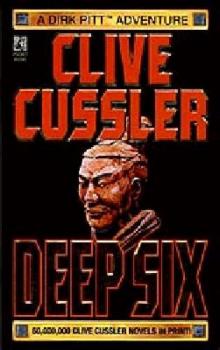 Deep Six
Deep Six Odessa Sea
Odessa Sea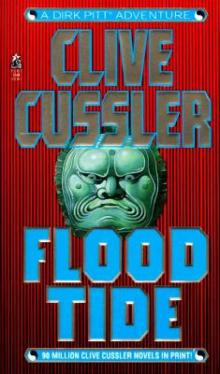 Flood Tide
Flood Tide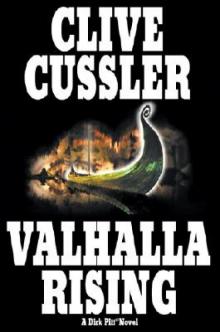 Valhalla Rising
Valhalla Rising Thriller 2
Thriller 2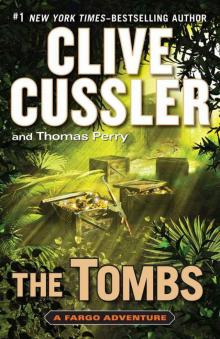 The Tombs
The Tombs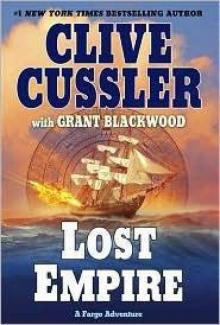 Lost Empire
Lost Empire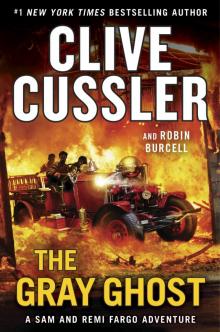 The Gray Ghost
The Gray Ghost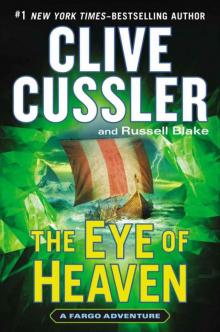 The Eye of Heaven
The Eye of Heaven Polar Shift
Polar Shift The Kingdom
The Kingdom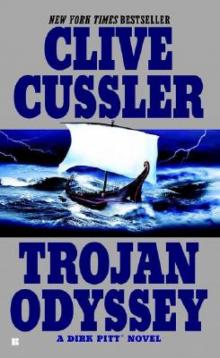 Trojan Odyssey
Trojan Odyssey Shadow Tyrants
Shadow Tyrants Nighthawk
Nighthawk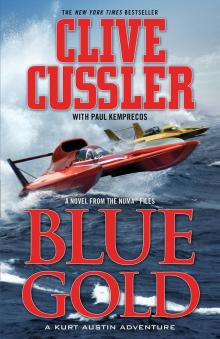 Blue Gold
Blue Gold Serpent
Serpent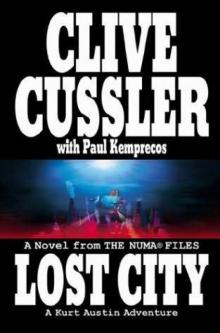 Lost City
Lost City The Gangster
The Gangster White Death
White Death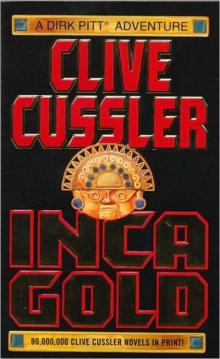 Inca Gold
Inca Gold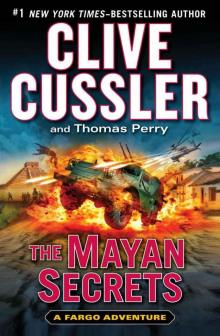 The Mayan Secrets
The Mayan Secrets The Pharaoh's Secret
The Pharaoh's Secret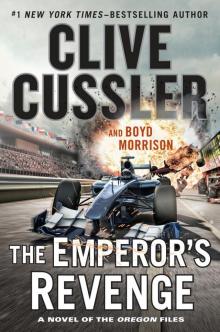 The Emperor's Revenge
The Emperor's Revenge Corsair
Corsair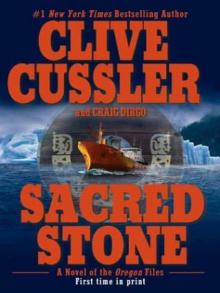 Sacred Stone
Sacred Stone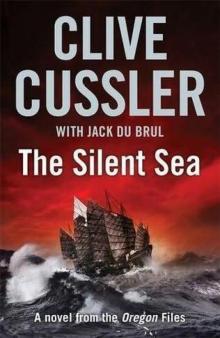 The Silent Sea
The Silent Sea The Rising Sea
The Rising Sea Black Wind
Black Wind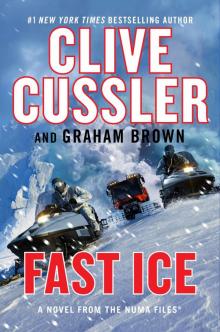 Fast Ice
Fast Ice Ghost Ship
Ghost Ship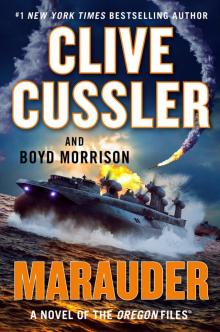 Marauder
Marauder The Thief
The Thief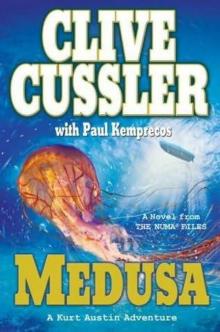 Medusa
Medusa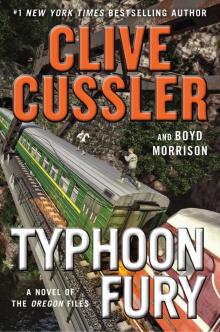 Typhoon Fury
Typhoon Fury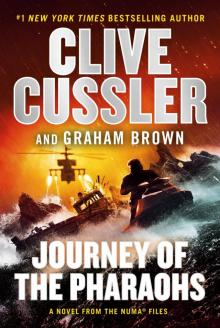 Journey of the Pharaohs
Journey of the Pharaohs The Navigator
The Navigator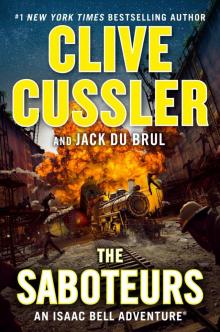 The Saboteurs
The Saboteurs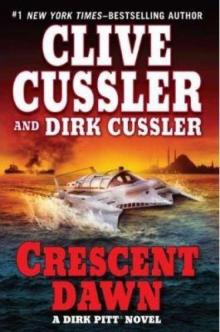 Crescent Dawn
Crescent Dawn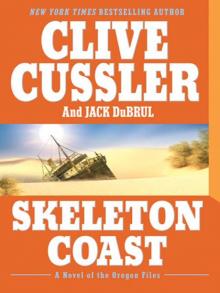 Skeleton Coast
Skeleton Coast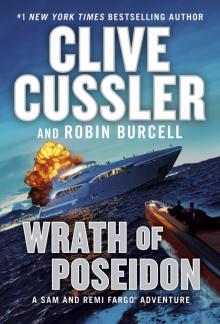 Wrath of Poseidon
Wrath of Poseidon The Mediterranean Caper
The Mediterranean Caper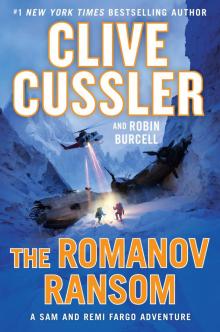 The Romanov Ransom
The Romanov Ransom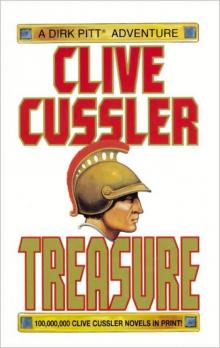 Treasure
Treasure The Race
The Race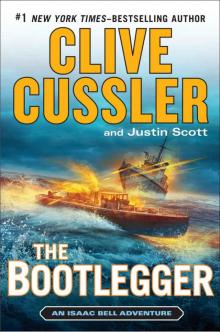 The Bootlegger
The Bootlegger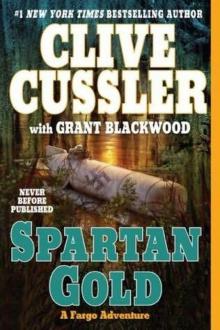 Spartan Gold
Spartan Gold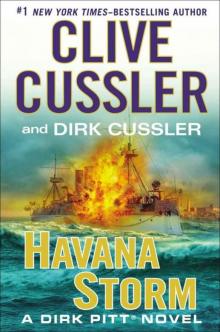 Havana Storm
Havana Storm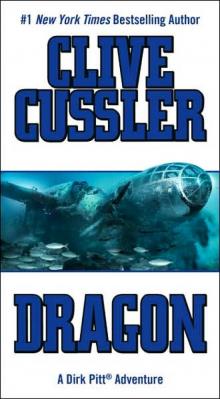 Dragon
Dragon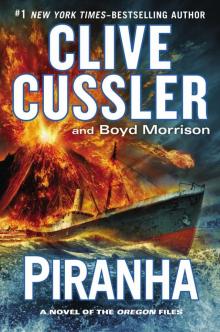 Piranha
Piranha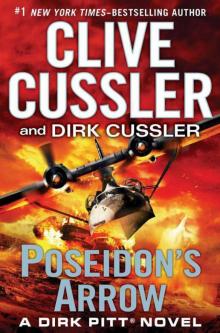 Poseidon's Arrow
Poseidon's Arrow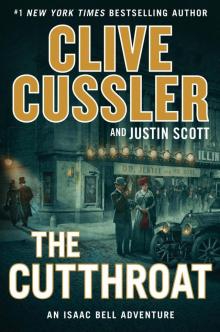 The Cutthroat
The Cutthroat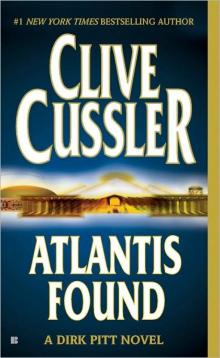 Atlantis Found
Atlantis Found The Jungle
The Jungle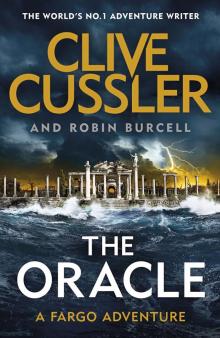 The Oracle
The Oracle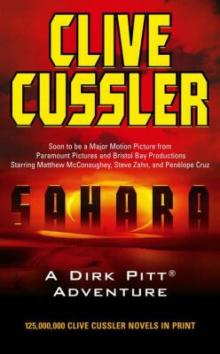 Treasure / Dragon / Sahara: Clive Cussler Gift Set
Treasure / Dragon / Sahara: Clive Cussler Gift Set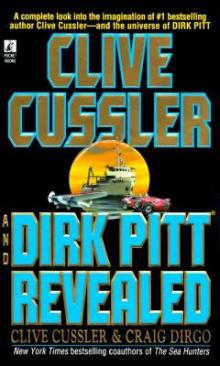 Clive Cussler and Dirk Pitt Revealed
Clive Cussler and Dirk Pitt Revealed The Sea Hunters
The Sea Hunters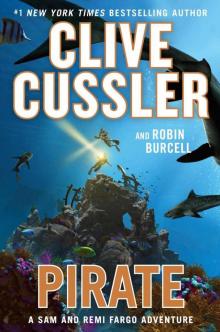 Pirate
Pirate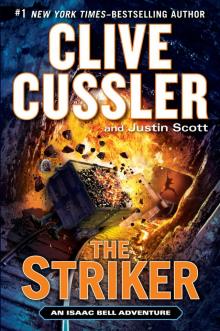 The Striker
The Striker Plague Ship
Plague Ship The Wrecker
The Wrecker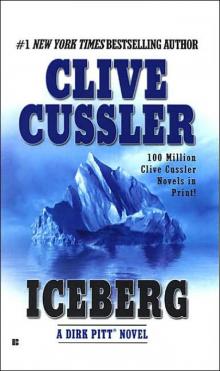 Iceberg
Iceberg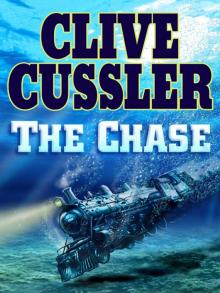 The Chase
The Chase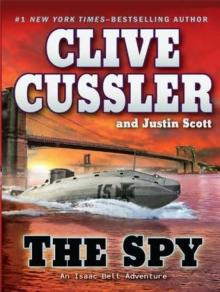 The Spy
The Spy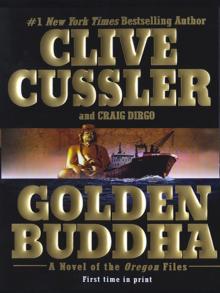 Golden Buddha
Golden Buddha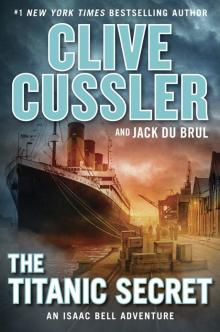 The Titanic Secret
The Titanic Secret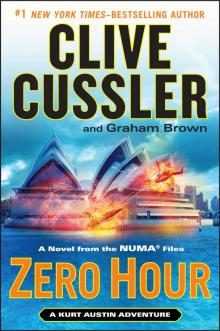 Zero Hour
Zero Hour Fire Ice
Fire Ice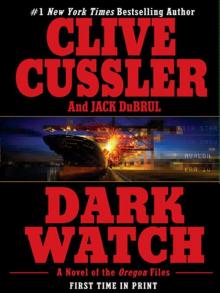 Dark Watch
Dark Watch The Storm
The Storm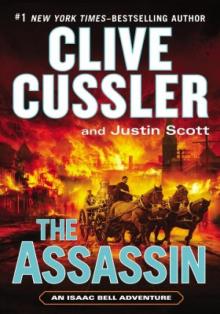 The Assassin
The Assassin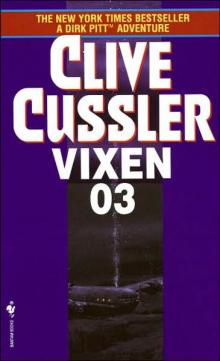 Vixen 03
Vixen 03 Arctic Drift
Arctic Drift Night Probe!
Night Probe! Cyclops
Cyclops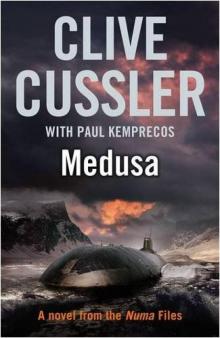 Medusa nf-8
Medusa nf-8 Shock Wave dp-13
Shock Wave dp-13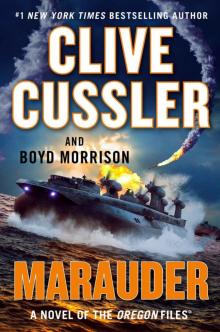 Marauder (The Oregon Files)
Marauder (The Oregon Files)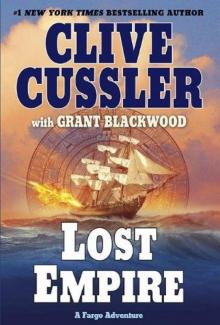 Lost Empire fa-2
Lost Empire fa-2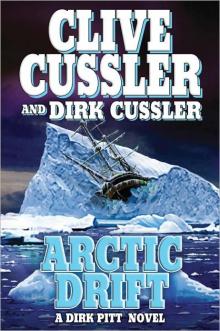 Arctic Drift dp-20
Arctic Drift dp-20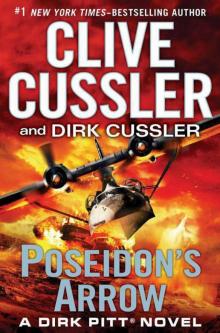 Dirk Pitt 22 - Poseidon's Arrow
Dirk Pitt 22 - Poseidon's Arrow Treasure of Khan dp-19
Treasure of Khan dp-19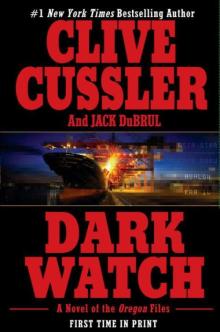 Dark Watch of-3
Dark Watch of-3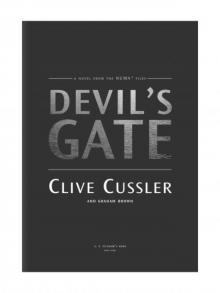 Devil's Gate
Devil's Gate The Sea Hunters II: More True Adventures with Famous Shipwrecks
The Sea Hunters II: More True Adventures with Famous Shipwrecks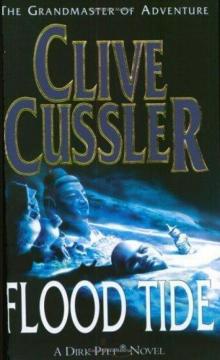 Flood Tide dp-14
Flood Tide dp-14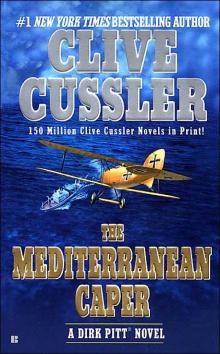 The Mediterranean Caper dp-2
The Mediterranean Caper dp-2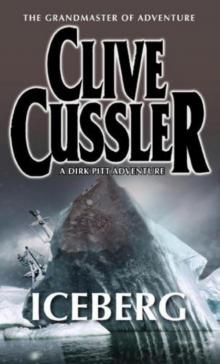 Iceberg dp-3
Iceberg dp-3 Sahara dpa-11
Sahara dpa-11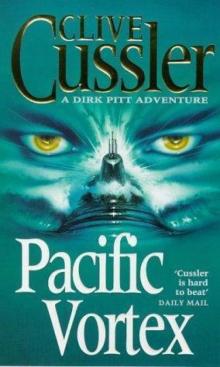 Pacific Vortex! dp-1
Pacific Vortex! dp-1 Deep Six dp-7
Deep Six dp-7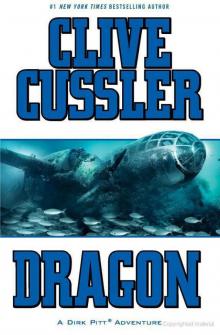 Dragon dp-10
Dragon dp-10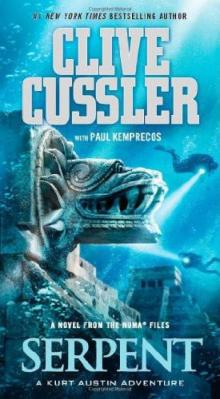 Serpent nf-1
Serpent nf-1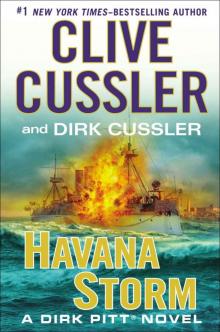 Havana Storm (Dirk Pitt Adventure)
Havana Storm (Dirk Pitt Adventure)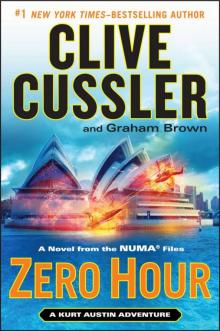 Zero Hour nf-11
Zero Hour nf-11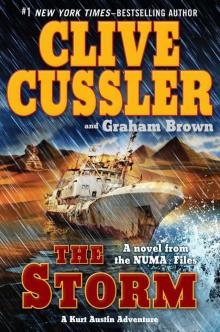 The Storm nf-10
The Storm nf-10 The Thief ib-5
The Thief ib-5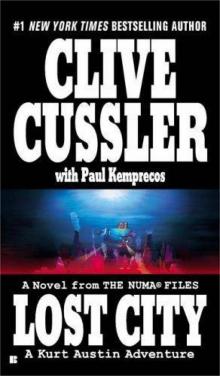 Lost City nf-5
Lost City nf-5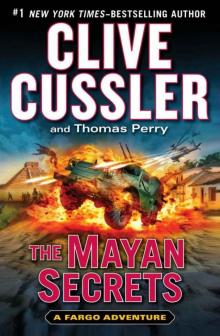 The Mayan Secrets fa-5
The Mayan Secrets fa-5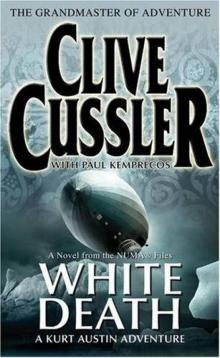 White Death nf-4
White Death nf-4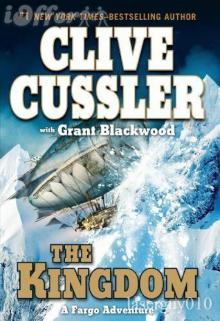 The Kingdom fa-3
The Kingdom fa-3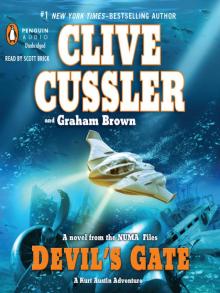 Devil's Gate nf-9
Devil's Gate nf-9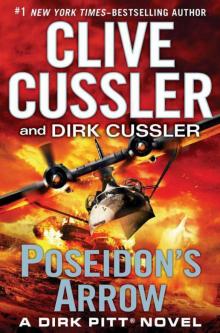 Poseidon's Arrow dp-22
Poseidon's Arrow dp-22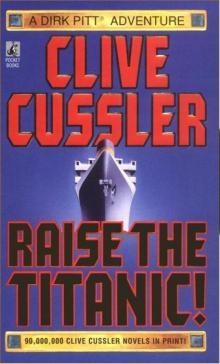 Raise the Titanic dp-4
Raise the Titanic dp-4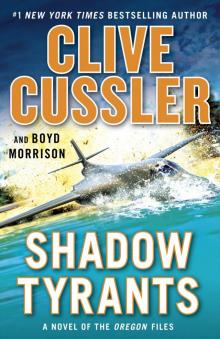 Shadow Tyrants--Clive Cussler
Shadow Tyrants--Clive Cussler Sacred Stone of-2
Sacred Stone of-2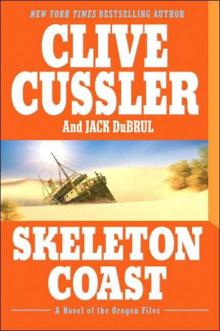 Skeleton Coast tof-4
Skeleton Coast tof-4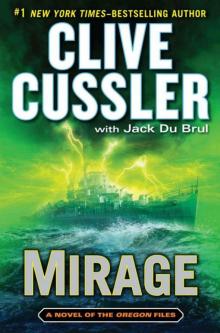 Mirage tof-9
Mirage tof-9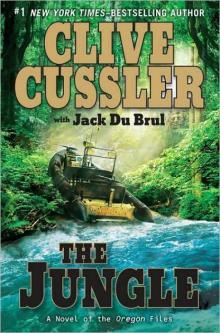 The Jungle of-8
The Jungle of-8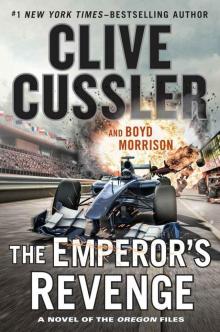 The Emperor's Revenge (The Oregon Files)
The Emperor's Revenge (The Oregon Files)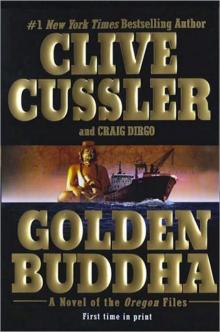 Golden Buddha of-1
Golden Buddha of-1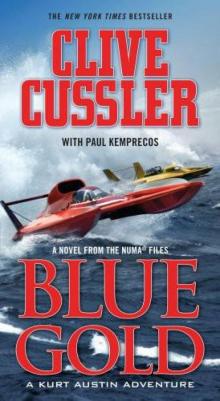 Blue & Gold
Blue & Gold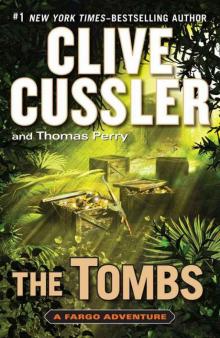 The Tombs fa-4
The Tombs fa-4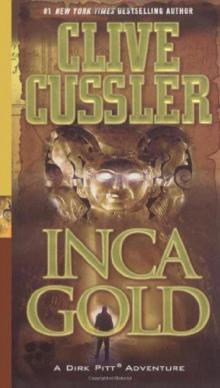 Inca Gold dp-12
Inca Gold dp-12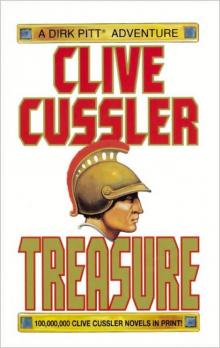 Treasure dp-9
Treasure dp-9 Atlantis Found dp-15
Atlantis Found dp-15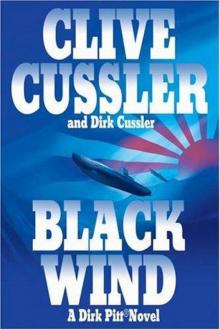 Black Wind dp-18
Black Wind dp-18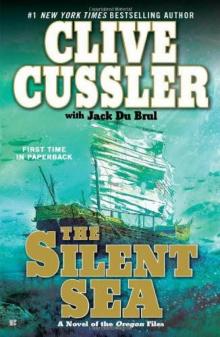 the Silent Sea (2010) tof-7
the Silent Sea (2010) tof-7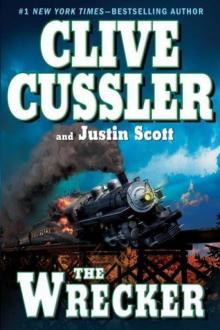 The Wrecker ib-2
The Wrecker ib-2 Fire Ice nf-3
Fire Ice nf-3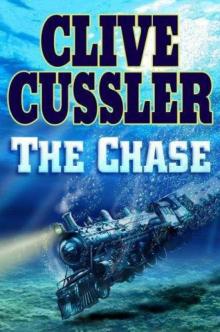 The Chase ib-1
The Chase ib-1 Sahara
Sahara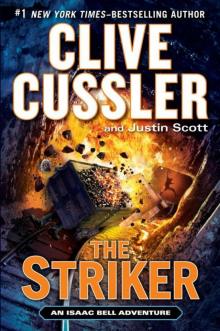 The Striker ib-6
The Striker ib-6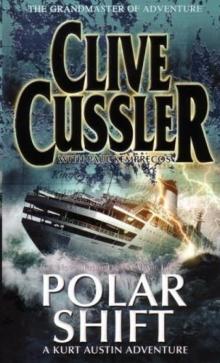 Polar Shift nf-6
Polar Shift nf-6 The Race ib-4
The Race ib-4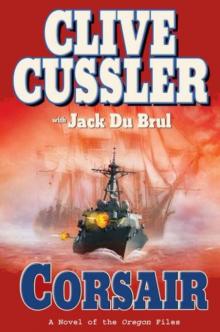 Corsair of-6
Corsair of-6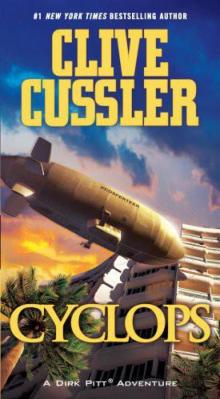 Cyclops dp-8
Cyclops dp-8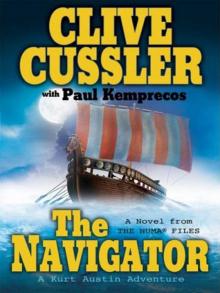 The Navigator nf-7
The Navigator nf-7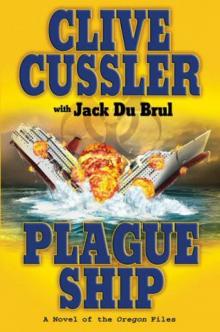 Plague Ship tof-5
Plague Ship tof-5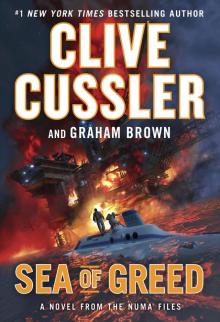 Sea of Greed
Sea of Greed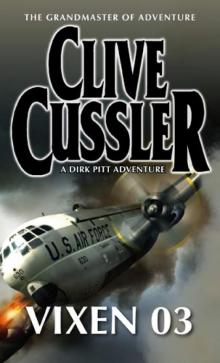 Vixen 03 dp-5
Vixen 03 dp-5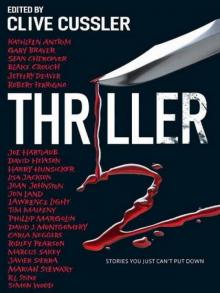 Thriller 2: Stories You Just Can't Put Down
Thriller 2: Stories You Just Can't Put Down